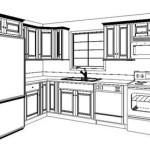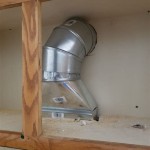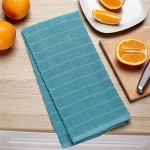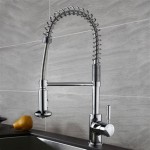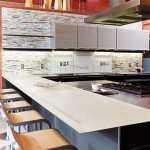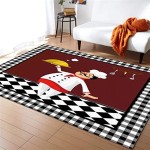Upper Corner Kitchen Cabinet Organization Ideas
Upper corner kitchen cabinets often pose a significant organizational challenge. Their depth and awkward accessibility can make it difficult to store and retrieve items efficiently. This article explores various strategies for maximizing the usability of these spaces, focusing on practical solutions that enhance both accessibility and organization.
Effective organization of upper corner cabinets requires careful consideration of the items to be stored, the frequency of their use, and the physical limitations of the space itself. Planning is paramount; an inventory of existing kitchenware is essential to determine what needs to be stored and how often it will be accessed. Categorizing items by function (e.g., baking supplies, serving dishes, spices) can then inform the selection of appropriate organizational tools and strategies.
Several factors contribute to the difficulty of organizing upper corner cabinets. The most common is the cabinet's depth, which can lead to items being pushed to the back and forgotten. Reaching into the depths of the cabinet can be challenging, especially for individuals with limited mobility. Additionally, the shape of the corner often presents an awkward angle that is difficult to utilize effectively. Addressing these challenges requires employing specialized organizational solutions.
Leveraging Lazy Susans
Lazy Susans are a classic and highly effective solution for organizing upper corner cabinets. These rotating platforms allow for easy access to items stored at the back of the cabinet, eliminating the need to reach and rearrange contents. There are two primary types of Lazy Susans suitable for upper corner cabinets: full-circle and pie-cut. Full-circle Lazy Susans offer maximum storage capacity and are ideal for storing a variety of items, while pie-cut Lazy Susans are specifically designed to fit the angled shape of the corner and are particularly well-suited for storing larger items like pots and pans.
When selecting a Lazy Susan, it is crucial to consider the dimensions of the cabinet and the weight capacity of the rotating platform. Measure the interior height, width, and depth of the cabinet to ensure that the Lazy Susan will fit comfortably. Check the weight capacity to ensure it can support the items being stored without buckling or malfunctioning. Opt for units with smooth, quiet rotation mechanisms for optimal ease of use. Material considerations should also be taken into account. Options include plastic, wood, and metal, each offering varying degrees of durability and aesthetics. Plastic Lazy Susans are generally the most affordable and easy to clean, while wood and metal options offer a more sophisticated look and often greater durability.
Installation of a Lazy Susan is typically straightforward. Many models are designed to be simply placed inside the cabinet, while others may require some minor assembly or attachment to the cabinet shelves. Refer to the manufacturer's instructions for specific installation guidance. Once installed, the Lazy Susan should be regularly cleaned to prevent the buildup of dust and grime. Periodically check the rotation mechanism to ensure it is functioning smoothly and lubricate if necessary.
Strategic placement of items on the Lazy Susan is critical for maximizing its effectiveness. Place frequently used items near the front for easy access, and store less frequently used items towards the back. Group similar items together to maintain a sense of order. Avoid overloading the Lazy Susan, as this can hinder its rotation and potentially damage the mechanism. Distribute the weight evenly to prevent the platform from tilting or becoming unbalanced.
Employing Pull-Out Shelves and Drawers
Pull-out shelves and drawers offer another excellent solution for optimizing the accessibility of upper corner cabinets. These units slide out, bringing the contents of the cabinet within easy reach. This is particularly beneficial for individuals with limited mobility or those who find it difficult to reach into the depths of the cabinet. Pull-out shelves and drawers are available in a variety of sizes and configurations to suit different cabinet dimensions and storage needs.
The selection of pull-out shelves and drawers should be based on the specific requirements of the cabinet and the items being stored. Consider the weight capacity of the shelves and drawers, as well as the material from which they are constructed. Options include wood, metal, and wire, each offering different levels of durability and visibility. Wire shelves provide better visibility, allowing for easy identification of contents, while solid shelves offer greater stability and can prevent smaller items from falling through.
Installation of pull-out shelves and drawers typically requires some basic carpentry skills. Measure the interior dimensions of the cabinet carefully to ensure that the units will fit properly. Follow the manufacturer's instructions for installation, paying close attention to the alignment of the slides and the secure attachment of the shelves or drawers to the cabinet walls. Proper installation is essential for ensuring smooth and reliable operation.
Organizing items on pull-out shelves and drawers involves similar principles to organizing a standard cabinet. Group similar items together, place frequently used items near the front, and use dividers or containers to separate and contain smaller items. Labeling shelves or drawers can also be helpful for quickly identifying the contents. Regular cleaning and maintenance are essential for keeping pull-out shelves and drawers in good working order. Wipe down the surfaces regularly to remove dust and spills, and lubricate the slides as needed to ensure smooth operation.
Utilizing Corner Cabinet Organizers
Corner cabinet organizers are specifically designed to maximize the use of space in awkward corner cabinets. These organizers come in a variety of shapes and sizes, including tiered shelves, swing-out units, and specialized containers. They are designed to conform to the unique geometry of corner cabinets, providing efficient storage solutions for a wide range of items.
Tiered shelves offer a simple and effective way to increase storage capacity in upper corner cabinets. These shelves stack vertically, allowing for the storage of multiple items in a compact space. Tiered shelves are particularly well-suited for storing spices, canned goods, and other small items.
Swing-out units are more complex organizational solutions that feature shelves or containers that swing out from the cabinet, providing easy access to items stored at the back. These units are ideal for storing larger items such as pots and pans or small appliances. Swing-out units often require professional installation due to their complex mechanics.
Specialized containers, such as corner-shaped bins and baskets, are designed to fit snugly into the corners of cabinets. These containers can be used to store a variety of items, from kitchen linens to cleaning supplies. Clear containers allow for easy visibility of contents, while opaque containers can be used to conceal clutter.
When choosing corner cabinet organizers, consider the dimensions of the cabinet and the items to be stored. Measure the interior height, width, and depth of the cabinet carefully to ensure that the organizers will fit properly. Select organizers that are made from durable materials and that are easy to clean. Organize items on corner cabinet organizers in a logical and accessible manner. Group similar items together, place frequently used items near the front, and use labels to identify the contents of containers.
Regular cleaning and maintenance are essential for keeping corner cabinet organizers in good working order. Wipe down the surfaces regularly to remove dust and spills, and check for any signs of wear or damage. Replace damaged organizers as needed to maintain the organization and functionality of the corner cabinet.
Beyond these specific organizational tools, adapting general organizational principles to the unique challenges of upper corner cabinets can significantly improve their usability. Storing frequently used items in easily accessible locations is paramount. Seldom-used items can be relegated to the more difficult-to-reach areas. Utilizing vertical space efficiently, through the use of shelf risers or stackable containers, further maximizes storage capacity. Regularly decluttering the cabinet to remove expired items or items that are no longer needed prevents the buildup of unnecessary clutter and simplifies the organization process.
Ultimately, the most effective approach to organizing upper corner kitchen cabinets involves a combination of careful planning, the selection of appropriate organizational tools, and the implementation of sound organizational principles. By addressing the specific challenges posed by these spaces, it is possible to create a kitchen that is both functional and aesthetically pleasing.

Upper Corner Kitchen Cabinet Solutions Live Simply By Annie Cabinets

Iheart Organizing Organized Kitchen Corner Cabinet With A Diy Lazy Susan

Upper Corner Kitchen Cabinet Solutions Live Simply By Annie

Iheart Organizing Organized Kitchen Corner Cabinet With A Diy Lazy Susan

8 Upper Corner Cabinet Solutions Ideas Kitchen

Iheart Organizing Organized Kitchen Corner Cabinet With A Diy Lazy Susan

Upper Corner Kitchen Cabinet Solutions Live Simply By Annie

Corner Cabinet Organizers Kitchen Storage Ideas

Kitchen Organization Ideas Corner Cabinet

8 Upper Corner Cabinet Solutions Ideas Kitchen
Related Posts

